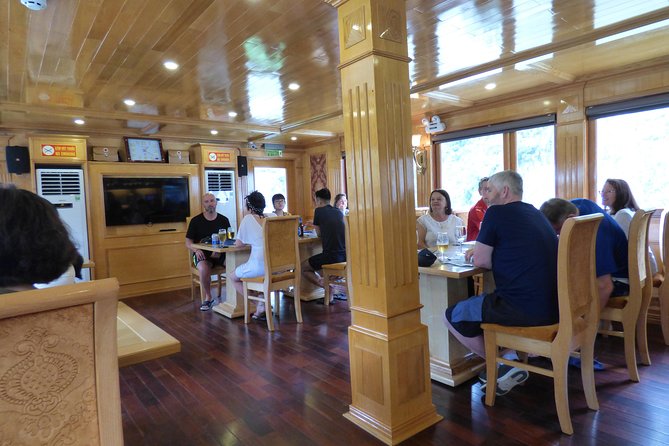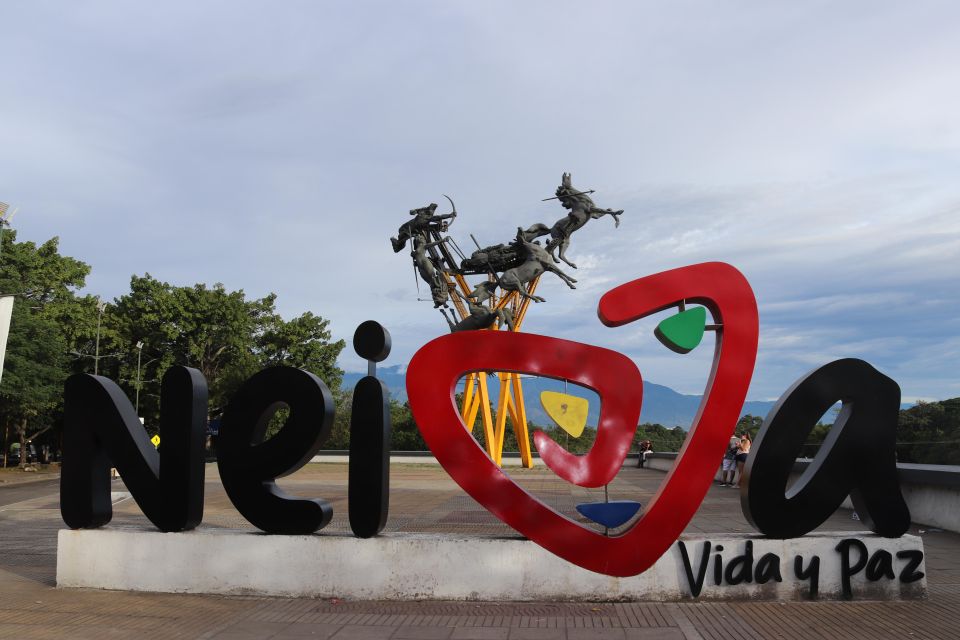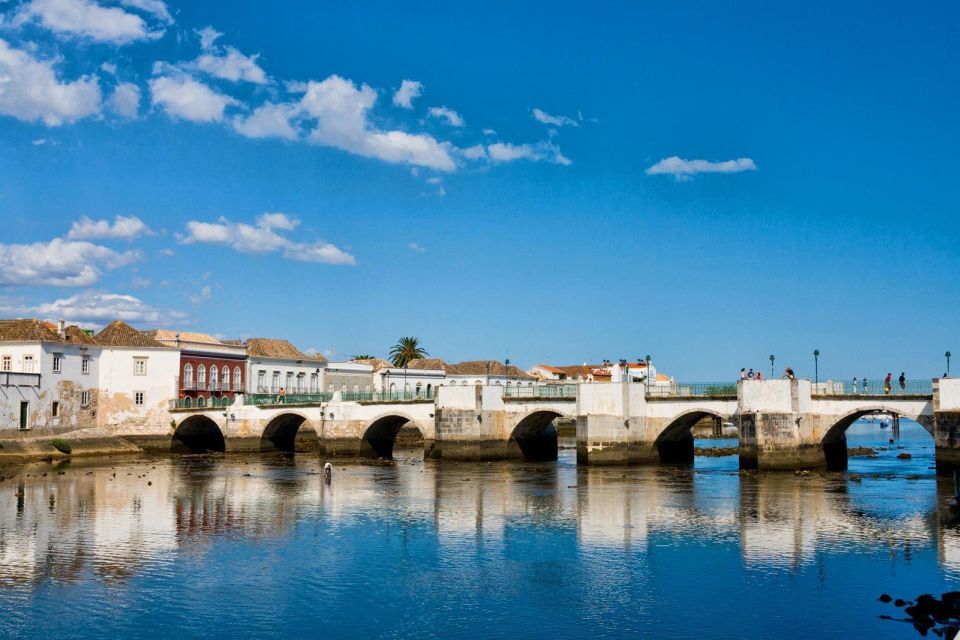Exploring the Berlin Wall offers a glimpse into a divided city that once symbolized the intense struggles of the Cold War. Visitors can walk the remnants of this historical barrier, uncovering the stories of those who lived on either side and the daring escapes that defined an era. Key sites like Checkpoint Charlie and the Brandenburg Gate serve as poignant reminders of the past, inviting reflection on the lessons learned from such division. Yet, what does this history reveal about the resilience of the human spirit in the face of oppression?
Key Points
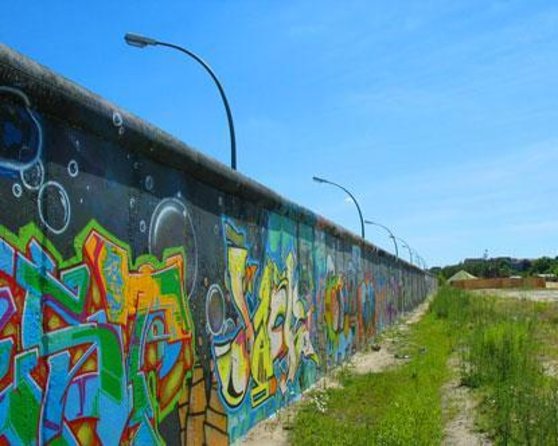
- The Berlin Wall, erected in 1961, symbolized the Cold War’s ideological divide between capitalism and communism.
- Key locations like Checkpoint Charlie and the Brandenburg Gate illustrate the historical significance and transformation of Berlin.
- Life in Cold War Berlin was marked by strict government control in East Berlin, leading to stark economic and cultural disparities.
- Many individuals attempted daring escapes from East to West Berlin, showcasing resilience against oppressive regimes.
- Guided tours provide deep insights into the Wall’s history, enhancing understanding through personal stories and emotional narratives.
It's also worth checking out some other tours and experiences nearby.
Historical Significance of the Berlin Wall
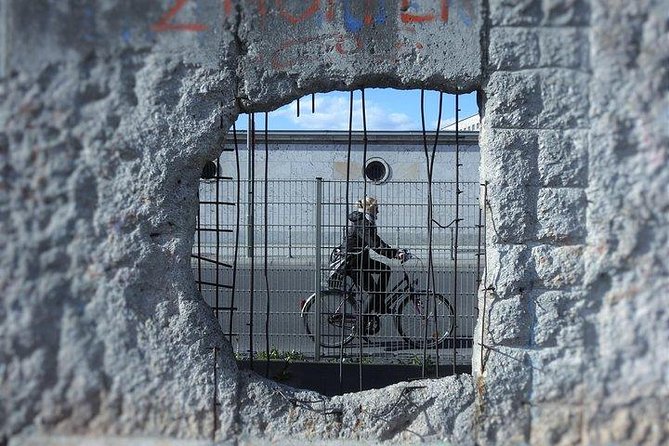
The Berlin Wall, a stark concrete barrier, symbolized the ideological divide between East and West during the Cold War, profoundly shaping the lives of millions and the course of history.
Erected in 1961, it divided families, friends, and a nation, representing the struggle between capitalism and communism. The wall became a powerful emblem of oppression, as it restricted movement and silenced dissent in East Germany.
Its fall in 1989 marked a pivotal moment, not just for Germany, but for the world, signifying the collapse of authoritarian regimes across Eastern Europe.
The wall’s historical significance lies in its enduring lessons about freedom, resilience, and the human spirit’s quest for unity, reminding future generations of the importance of safeguarding democratic values.
Key Locations Along the Tour
Visitors frequently explore key locations along the tour, each offering a unique glimpse into Berlin’s tumultuous history during and after the wall’s existence.
The journey often starts at the longest remaining section of the wall, where travelers can feel the weight of its past.
Checkpoint Charlie, once a critical crossing point between East and West, draws attention with its iconic guardhouse. A former DDR watchtower stands as a stark reminder of surveillance and control.
Significant sites like the Brandenburg Gate and the Reichstag building highlight the city’s transformation. The Holocaust Memorial invites reflection on lost lives.
Each location helps travelers connect with the enduring impact of the Berlin Wall and the Cold War on the city’s identity.
Life in Cold War Berlin
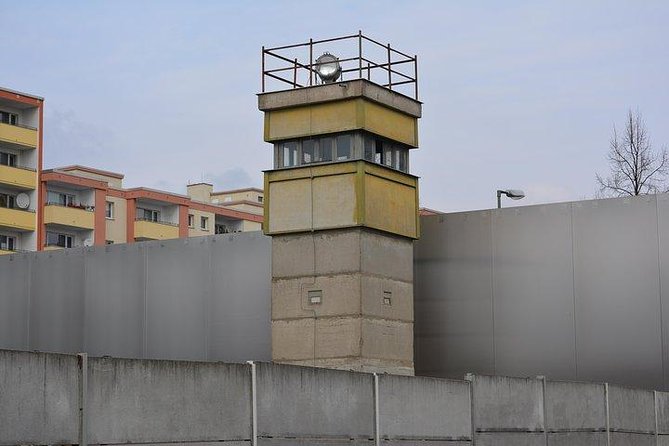
Life in Cold War Berlin was marked by stark contrasts and deep divisions, as the city became a focal point of ideological conflict between East and West. Daily life for residents varied significantly based on which side of the Wall they lived on.
In the East, citizens faced restrictions on freedom, limited access to goods, and a pervasive sense of surveillance. Conversely, West Berlin offered a vibrant culture and greater personal liberties. The unique experiences of people in both sectors shaped the city’s identity during this tumultuous period.
Key aspects of life included:
-
Strict government control in East Berlin
-
Economic disparity between the two sides
-
Cultural differences that emerged from the divide
-
The constant presence of the Wall impacting daily routines
Stories of Escape and Survival
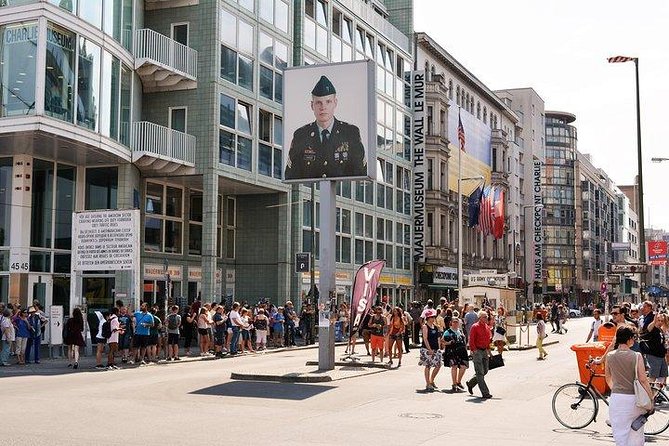
Amidst the oppressive atmosphere of Cold War Berlin, countless individuals risked everything in daring attempts to escape from East to West, driven by a desperate desire for freedom and a better life.
Many devised ingenious methods, using makeshift hot air balloons, hidden compartments in vehicles, or even swimming across the treacherous waters of the Spree River. Others sought the help of sympathetic Westerners who provided safe passage.
Each successful escape became a beacon of hope for those still trapped behind the wall. Tragically, many faced dire consequences if caught, including imprisonment or worse.
These stories of courage and tenacity highlight the human spirit’s resilience, reminding us of the lengths people will go to in pursuit of liberty and a brighter future.
Expert Tour Guide Insights
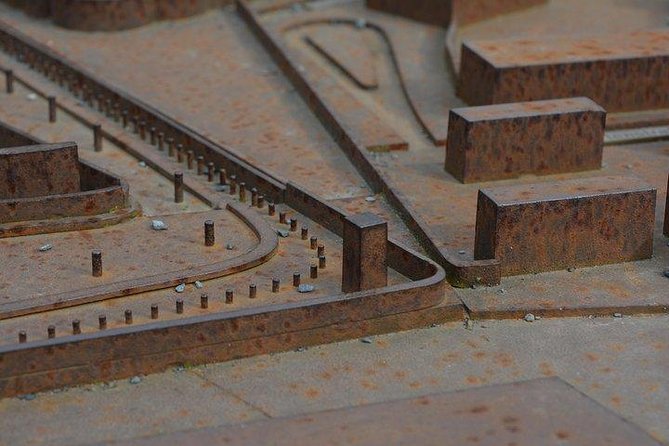
Tour guides bring the history of the Berlin Wall to life, sharing captivating stories and insights that deepen the understanding of this pivotal moment in world history. Their expertise transforms the tour into an engaging experience, allowing travelers to connect with the past on a personal level.
Guides possess extensive knowledge of Berlin’s complex history.
Travelers appreciate the guides’ ability to weave personal anecdotes into historical context.
Enthusiasm and storytelling skills make the history relatable and memorable.
Reviews consistently highlight the emotional depth and informative nature of the tours.
With such expert insights, visitors don’t just see the landmarks; they feel the weight of history that shaped the city and its people.
Accessibility Features of the Tour
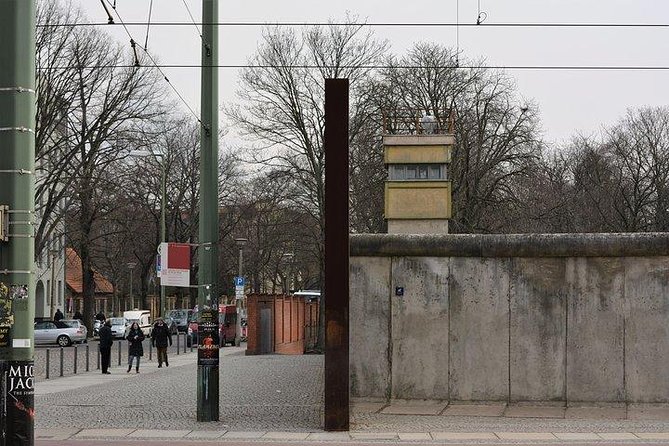
Designed with inclusivity in mind, the tour offers wheelchair and stroller accessibility, ensuring that everyone can experience the rich history of the Berlin Wall. Participants can navigate various landmarks easily, as the route is thoughtfully planned to accommodate diverse mobility needs. Service animals are welcome, further enhancing the tour’s accessibility.
Plus, the meeting point is conveniently located near public transportation, making it easy for all travelers to reach. Those who need flexibility can take advantage of the free cancellation policy up to 24 hours before the tour starts.
With options for both paper and electronic vouchers, attendees can choose what works best for them, making the experience seamless and enjoyable for everyone involved.
Customer Experiences and Reviews

Customer experiences highlight the tour’s exceptional ability to blend historical insight with personal narratives, making it a memorable journey through Berlin’s past.
Travelers consistently praise the depth of knowledge shared, with many noting the emotional resonance of the stories. The tour’s engaging format keeps participants captivated, ensuring they walk away with a profound understanding of the wall’s impact.
-
62 reviews with a perfect 5.0 rating reflect overwhelming satisfaction.
-
Participants describe it as a must-do for history buffs.
-
Many appreciate the guides’ enthusiasm and relatable storytelling.
-
Emotional depth adds a unique layer to the historical context.
Planning Your Visit to Berlin
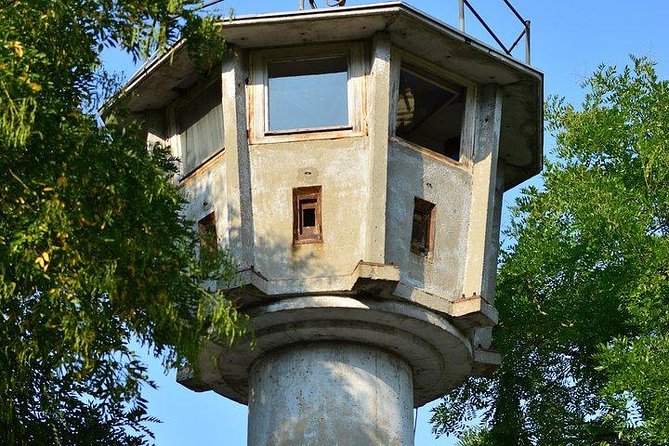
When planning a visit to Berlin, travelers should consider exploring the city’s rich history, particularly the profound legacy of the Berlin Wall.
A walking tour offers an in-depth experience, guiding visitors through significant sites like Checkpoint Charlie and the longest remaining section of the wall. Tours typically last 2.5 to 3 hours and accommodate small groups, ensuring personalized attention.
Travelers will hear compelling stories of survival and daring escapes, making the Cold War’s impact tangible. Accessible to all, these tours meet near public transportation for easy access.
With expert guides sharing engaging insights, visitors will leave with a deeper understanding of Berlin’s history, making the tour a must-do for anyone interested in this captivating city.
Here's a few more nearby tours and experiences we think you'll like.
Frequently Asked Questions
What Should I Wear for the Walking Tour?
For the walking tour, she suggests wearing comfortable shoes for walking, dressing in layers to adapt to changing weather, and carrying a light jacket or umbrella just in case. Staying comfortable enhances the overall experience.
Are There Any Age Restrictions for Participants?
There’s no strict age restriction for participants, so everyone can join the tour. Families with children often enjoy the experience, as the guides tailor their stories to engage audiences of all ages effectively.
Is Photography Allowed During the Tour?
Photography’s allowed during the tour, so travelers capture memorable moments. Guides encourage snapping photos, emphasizing the significance of each site. Participants appreciate the chance to document their experience and share the history with others.
Can I Bring Food or Drinks on the Tour?
Travelers can’t bring food or drinks on the tour, as it focuses on historical insights. However, they can enjoy nearby cafes before or after the experience, making it a perfect day out in Berlin.
How Do I Get to the Meeting Point?
To reach the meeting point, travelers can use public transportation, as it’s conveniently located near various stops. Birchys Berlin Tours is at Ebertstraße 24, making it easily accessible for everyone.
Not for you? Here's more of our most recent tour reviews happening neaby
- Private Berlin Cold War Tour by Car or on Foot
- Half-Day Best of Berlin Segway Tour
- Berlin: Guided Craft Beer & Cultural Tour With Snacks
- Berlin: Private E-Rickshaw Tour With Hotel Pickup Service
- Big Bus Berlin Hop-On Hop-Off Sightseeing Tour
- From Berlin: Private Tour of Potsdam With a Guide
- Berlin: Private Historic City Center Walking Tour
- Berlin: Mitte Culinary Food Tour
- Berlin: City Highlights Express & Panorama Roof Terrace
- Berlin: Government District Around the Reichstag Guided Tour
- East Berlin and the Wall: Walking Tour
- Berlin City: 2 Hour Guided Fat Tire E-Scooter Tour
- Berlin: Private City Rally Through the Government District
- Group Driving Tour From 1 – 6 People for 4 Hours Highlights of Berlin
- Photo Tour: Berlin Famous City Landmarks Tour
Recap
Visiting the Berlin Wall offers a powerful glimpse into a divided past, where the struggles for freedom and democracy resonate deeply.
Tourists explore key sites and hear firsthand accounts of bravery and resilience, making the experience both educational and moving.
As they walk along the remnants of the wall, visitors gain a profound understanding of history’s lessons.
Ultimately, a trip to Berlin not only honors those who endured the Cold War but also inspires a commitment to safeguarding democratic values today.


